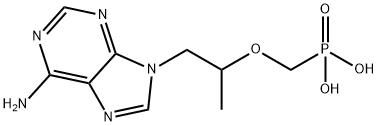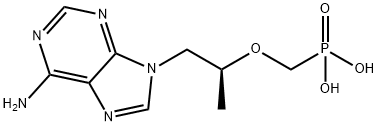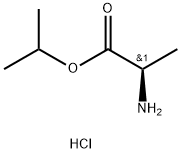(R)-(+)-Propylene carbonate
Synonym(s):(R)-1,2-Propanediol cyclic carbonate
- CAS NO.:16606-55-6
- Empirical Formula: C4H6O3
- Molecular Weight: 102.09
- MDL number: MFCD00798265
- EINECS: 1308068-626-2
- SAFETY DATA SHEET (SDS)
- Update Date: 2025-01-27 09:38:02

What is (R)-(+)-Propylene carbonate?
Description
(R)-(+)-Propylene carbonate, also known as (R)-1,2-Propanediol cyclic carbonate, presents as a colorless to pale yellow liquid. This compound should keep the container tightly closed and stored in a cool and dark place. For best results, store under inert gas, protected from moisture, as this substance is moisture-sensitive. (R)-(+)-Propylene carbonate is incompatible with oxidizing agents and acids. This chemical causes skin irritation as well as serious eye irritation.
Chemical properties
Colorless to light yellow liqui
The Uses of (R)-(+)-Propylene carbonate
(R)-1,2-Propylene Carbonate (cas# 16606-55-6) is a compound useful in organic synthesis.
Properties of (R)-(+)-Propylene carbonate
| Boiling point: | 240 °C(lit.) |
| Density | 1.189 g/mL at 25 °C(lit.) |
| vapor pressure | 0.59 psi ( 20 °C) |
| refractive index | n |
| Flash point: | >230 °F |
| storage temp. | under inert gas (nitrogen or Argon) at 2-8°C |
| solubility | Chloroform (Sparingly) |
| form | Oil |
| color | Clear Colourless to Pale Yellow |
| Specific Gravity | 1.189 |
| optical activity | [α]20/D +2°, neat |
| Water Solubility | 175 g/L (25 ºC) |
| CAS DataBase Reference | 16606-55-6(CAS DataBase Reference) |
Safety information for (R)-(+)-Propylene carbonate
| Signal word | Warning |
| Pictogram(s) |
 Exclamation Mark Irritant GHS07 |
| GHS Hazard Statements |
H315:Skin corrosion/irritation H319:Serious eye damage/eye irritation H335:Specific target organ toxicity, single exposure;Respiratory tract irritation |
| Precautionary Statement Codes |
P261:Avoid breathing dust/fume/gas/mist/vapours/spray. P264:Wash hands thoroughly after handling. P264:Wash skin thouroughly after handling. P271:Use only outdoors or in a well-ventilated area. P280:Wear protective gloves/protective clothing/eye protection/face protection. P302+P352:IF ON SKIN: wash with plenty of soap and water. P305+P351+P338:IF IN EYES: Rinse cautiously with water for several minutes. Remove contact lenses, if present and easy to do. Continuerinsing. |
Computed Descriptors for (R)-(+)-Propylene carbonate
| InChIKey | RUOJZAUFBMNUDX-GSVOUGTGSA-N |
Related products of tetrahydrofuran






![2,4,6,8-Tetraoxa-5-phosphanonanedioic acid, 5-[[(1R)-2-[6-[[[[9-[(2R)-5-hydroxy-2,11-diMethyl-5-oxido-9-oxo-3,6,8,10-tetraoxa-5-phosphadodec-1-yl]-9H-purin-6-yl]aMino]Methyl]aMino]-9H-purin-9-yl]-1-Methylethoxy]Methyl]-, 1,9-bis(1-Methylethyl) ester, 5-ox](https://img.chemicalbook.in/CAS/GIF/1093279-77-6.gif)

You may like
-
 (R)-Propylene Carbonate CAS 16606-55-6View Details
(R)-Propylene Carbonate CAS 16606-55-6View Details
16606-55-6 -
 (R)-Propylene carbonate, 98% CAS 16606-55-6View Details
(R)-Propylene carbonate, 98% CAS 16606-55-6View Details
16606-55-6 -
 (R)-(+)-Propylene carbonate CAS 16606-55-6View Details
(R)-(+)-Propylene carbonate CAS 16606-55-6View Details
16606-55-6 -
 106-43-4 Para Chloro Toluene (PCT) 99.00%View Details
106-43-4 Para Chloro Toluene (PCT) 99.00%View Details
106-43-4 -
 Pyrrolidine 99.00%View Details
Pyrrolidine 99.00%View Details
123-75-1 -
 Methyl-2-Methoxy-5-Sulfamoyl Benzoate 99.00%View Details
Methyl-2-Methoxy-5-Sulfamoyl Benzoate 99.00%View Details
33045-52-2 -
 Orthochlorobenzaldehyde (2-Chlorobenzaldehyde) 89-98-5 99.00%View Details
Orthochlorobenzaldehyde (2-Chlorobenzaldehyde) 89-98-5 99.00%View Details
89-98-5 -
 12029-98-0 99.00%View Details
12029-98-0 99.00%View Details
12029-98-0
Statement: All products displayed on this website are only used for non medical purposes such as industrial applications or scientific research, and cannot be used for clinical diagnosis or treatment of humans or animals. They are not medicinal or edible.